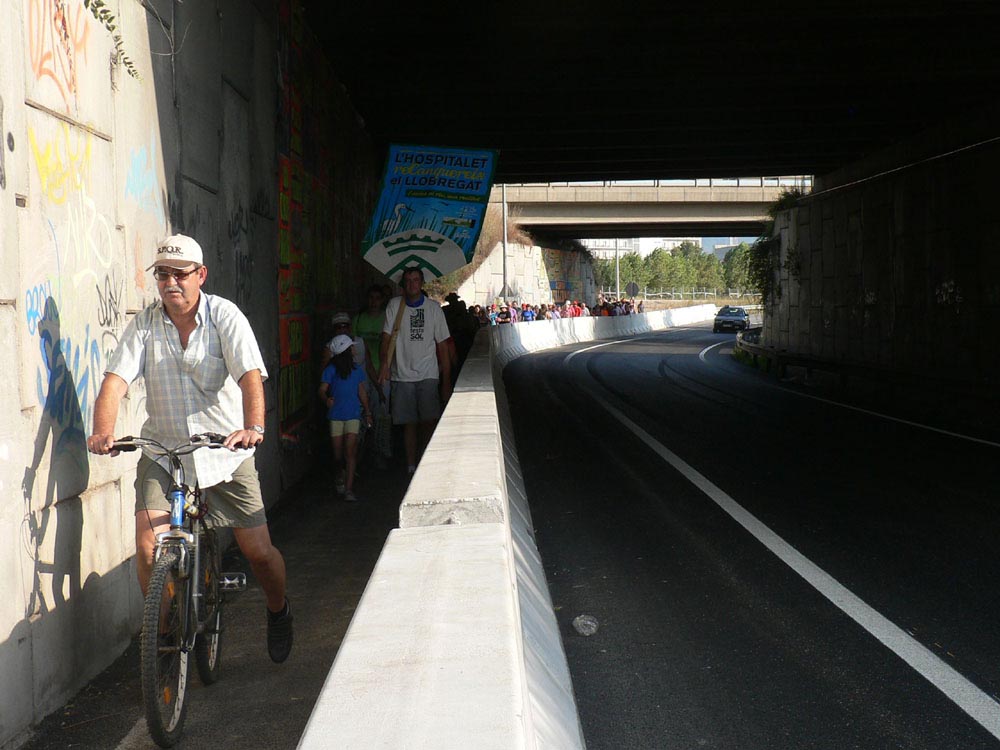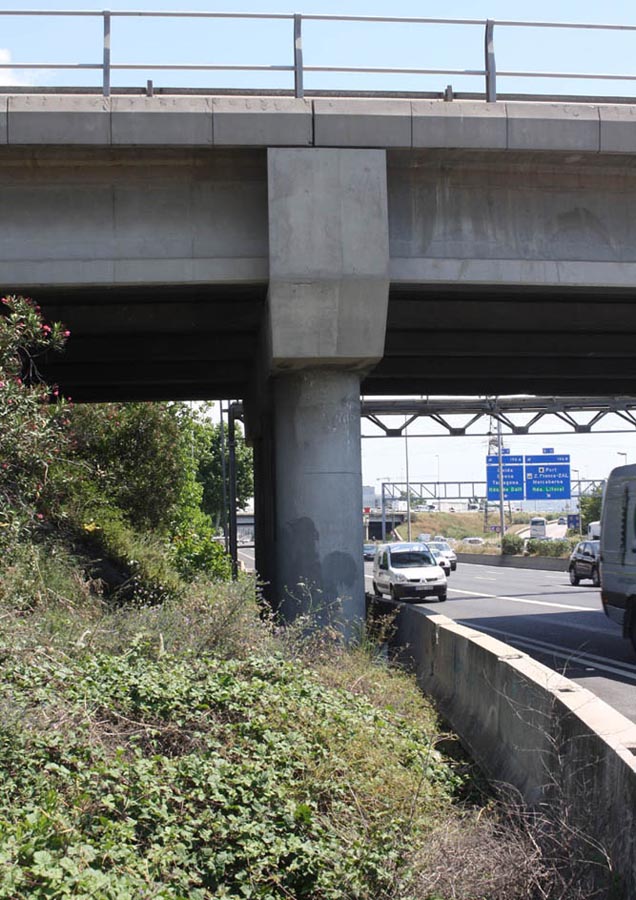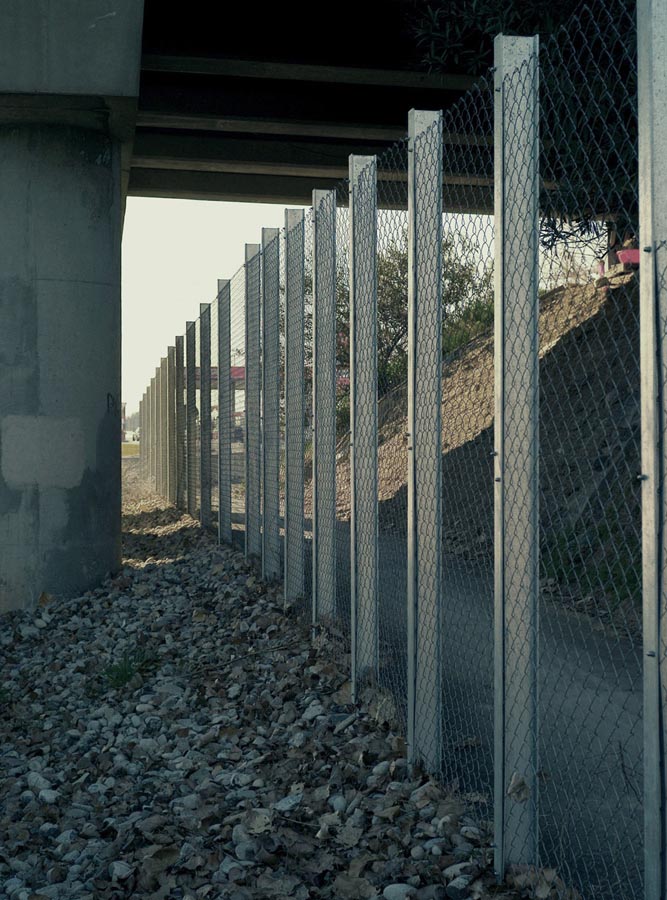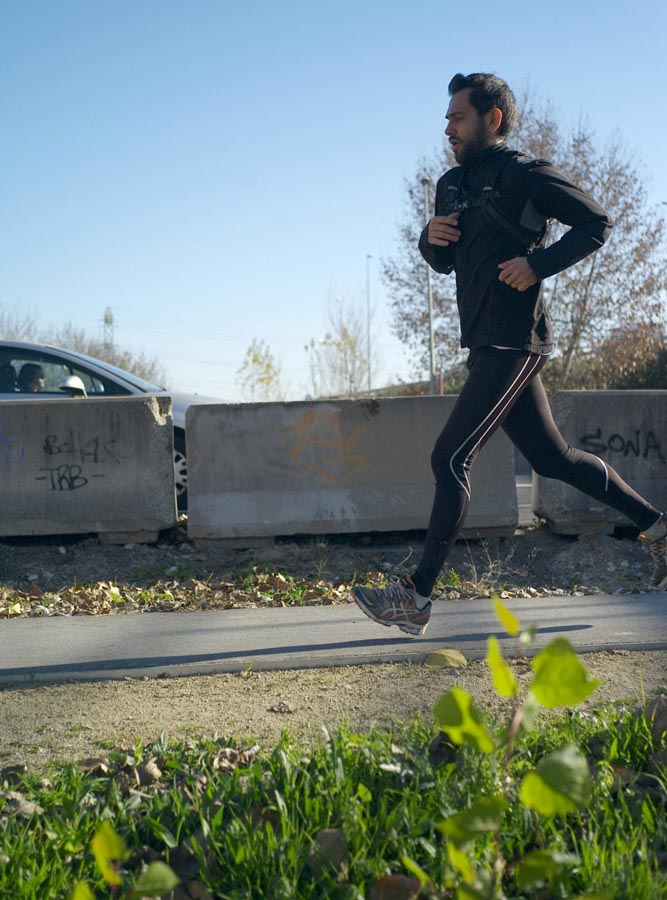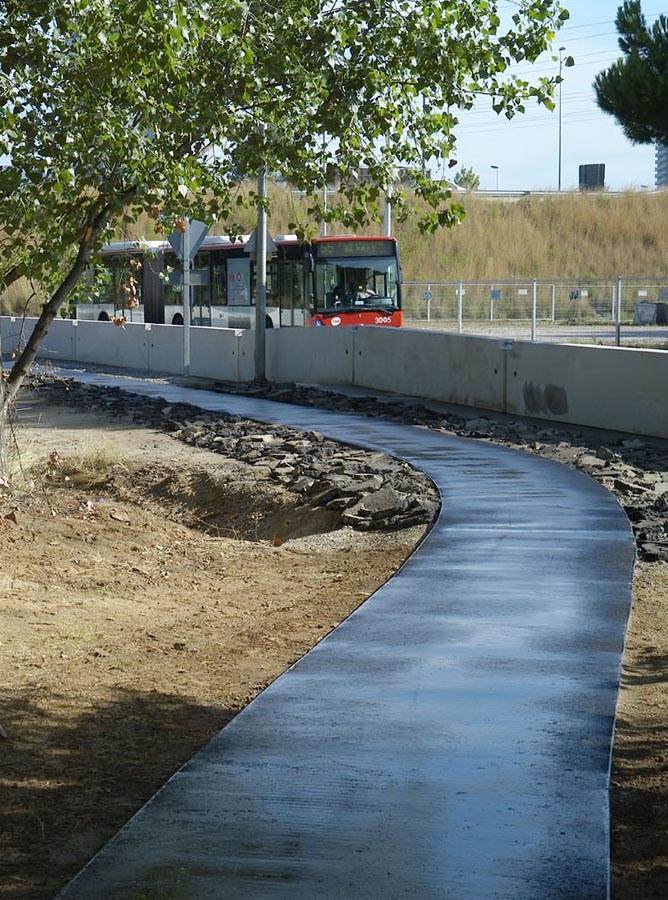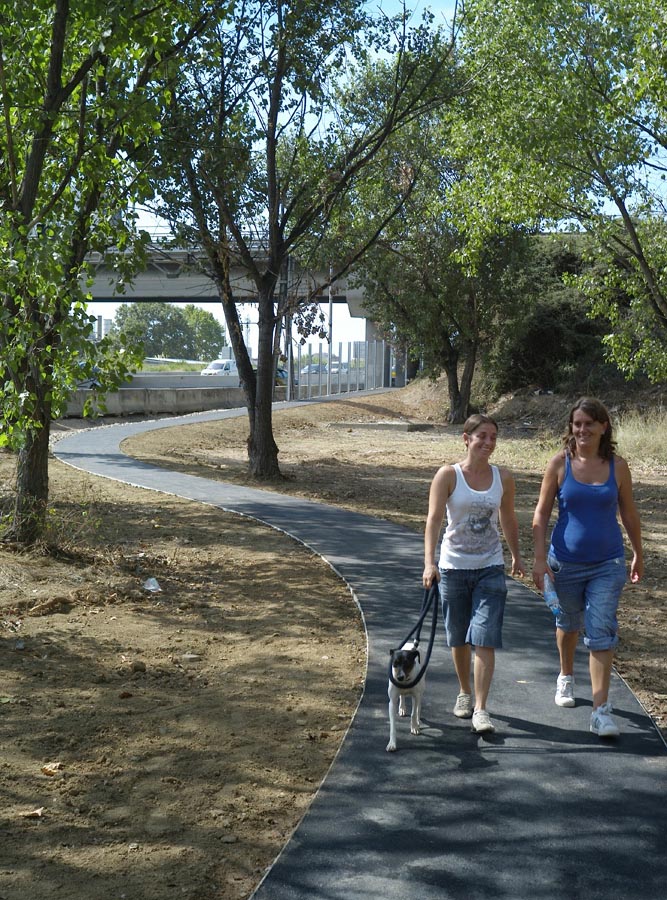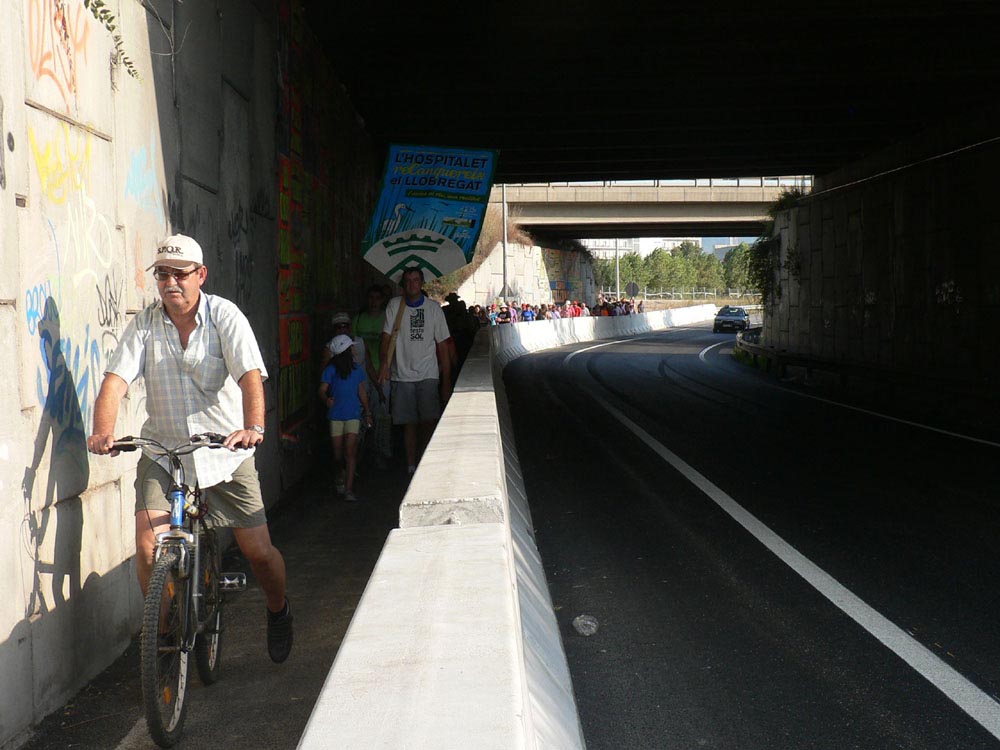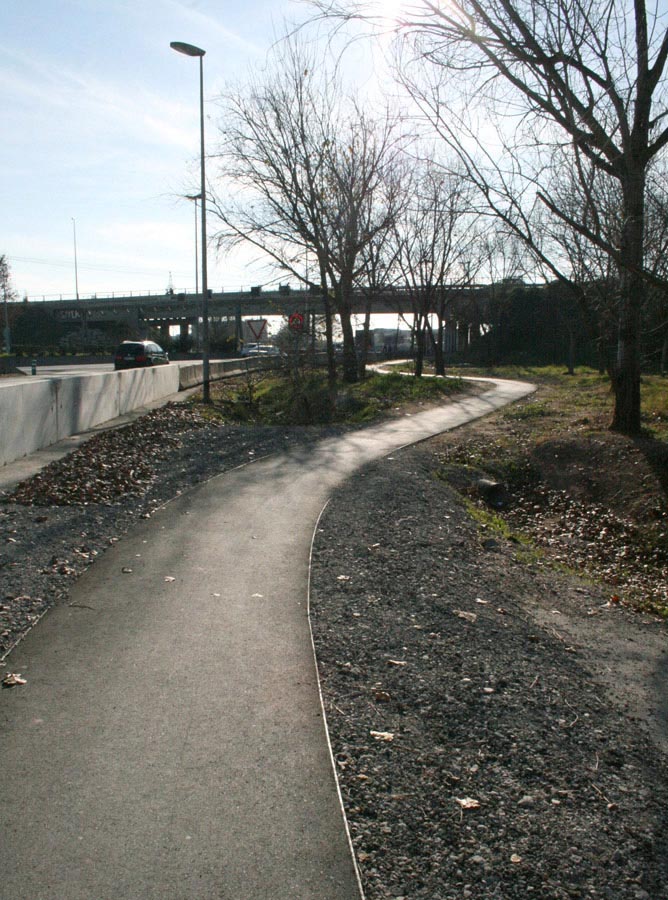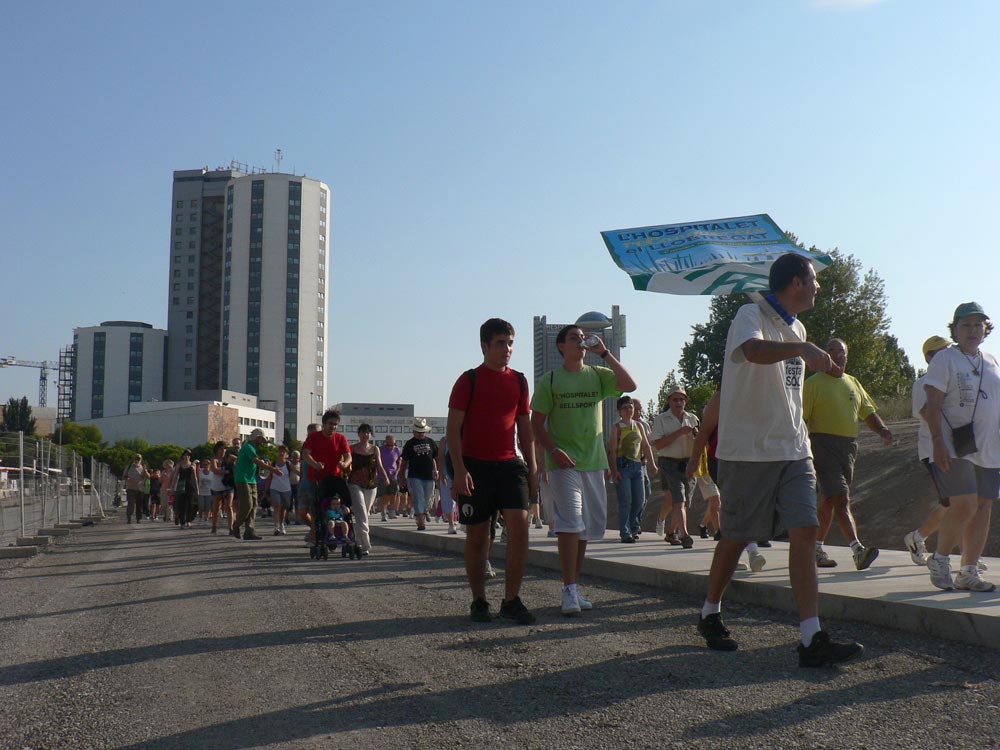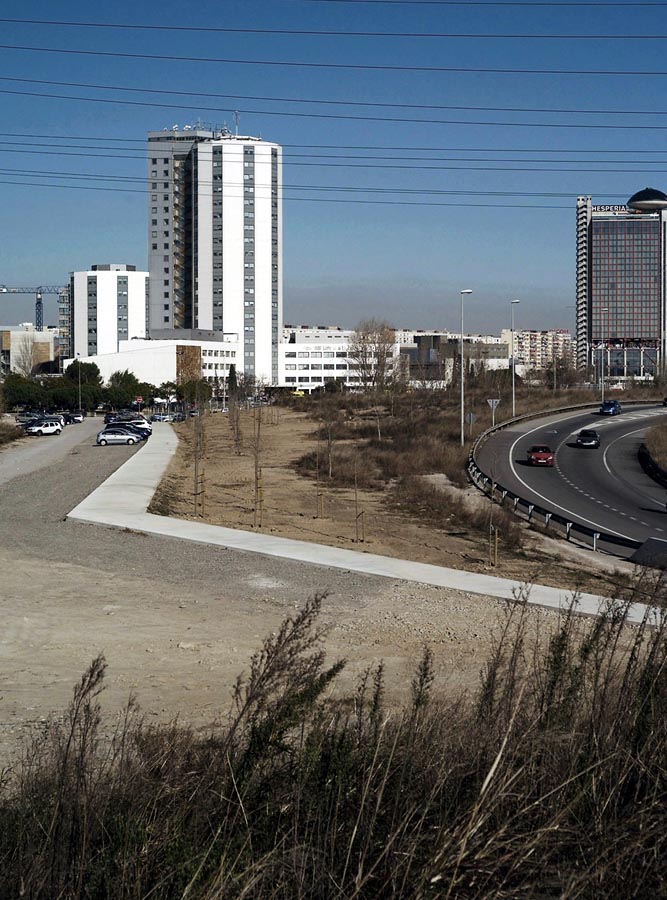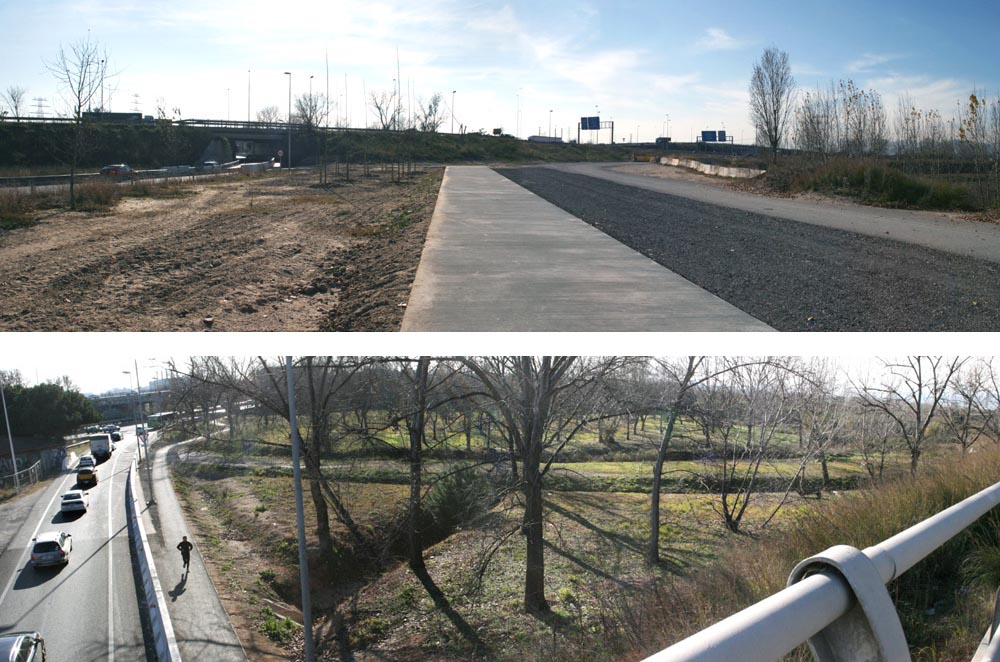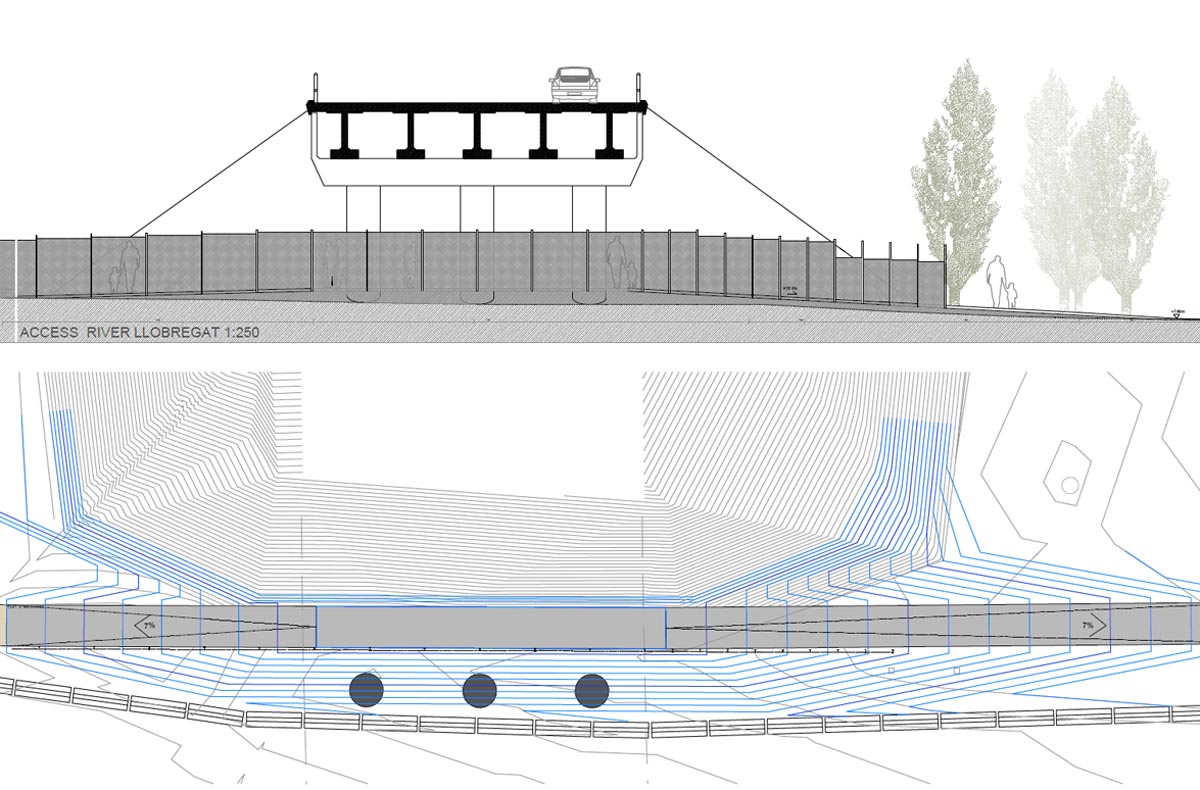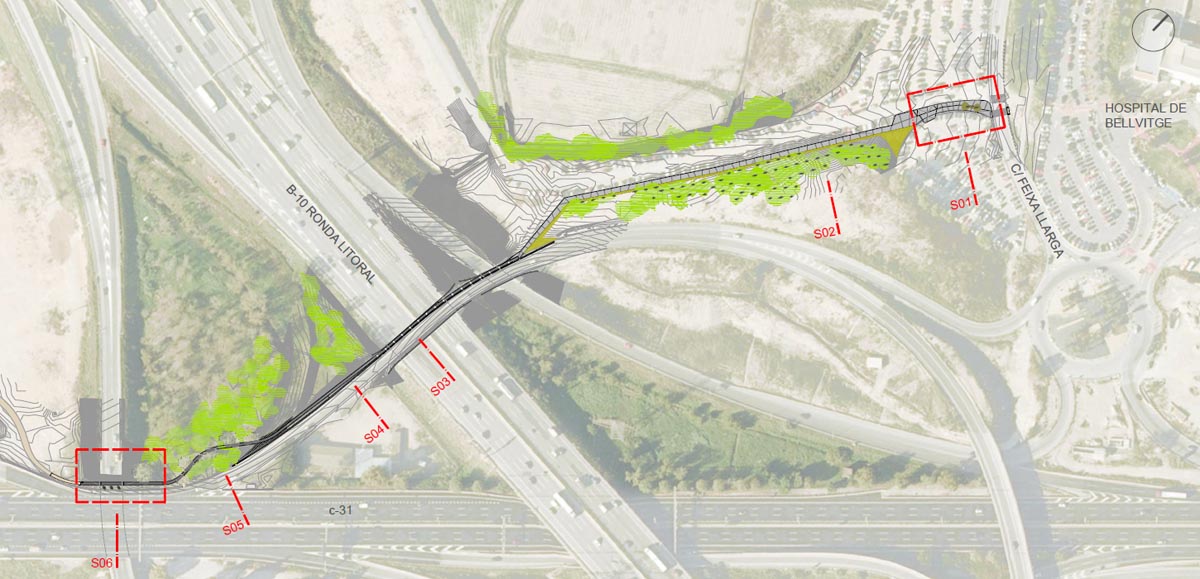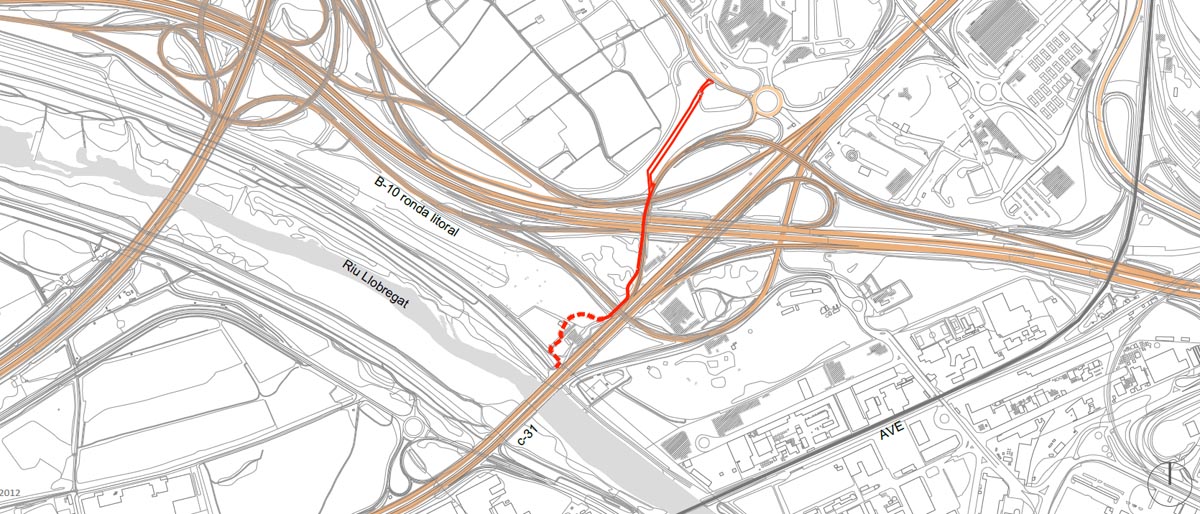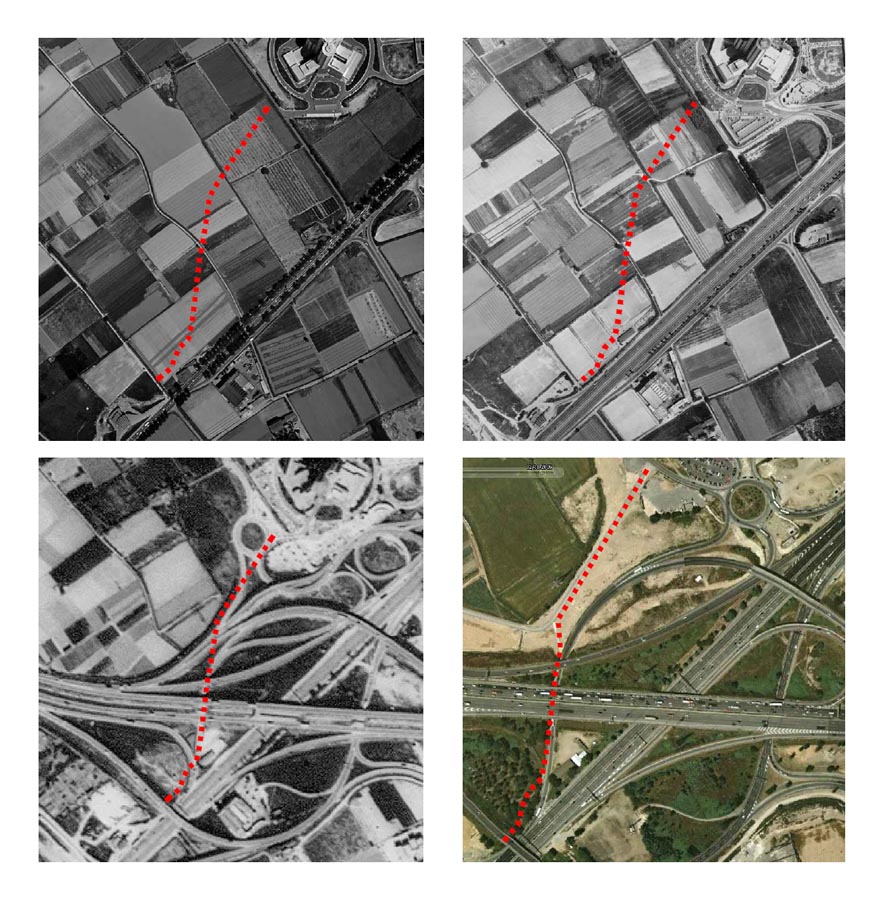Previous state
In the mid-1960s a construction company began to acquire the fertile agricultural land surrounding the Romanesque hermitage of Bellvitge on the left bank of the Llobregat River. This was the origin of a residential area which, located in L’Hospitalet de Llobregat, within the Barcelona metropolitan area, was soon to become one of Europe’s largest housing estates. The Bellvitge neighbourhood grew fast with a massive influx of immigrants from all over Spain, the proliferation of speculative operations that were then taking place with the blessing of the Franco regime and the subsequent sprawl at the periphery of Barcelona.Over the years, the tenacious claims of the neighbourhood associations served to civilise this poorly-connected dormitory suburb which lacked both equipment and services. Local struggles prevented the construction of new housing blocks and, with the end of the dictatorship, lead to the creation of an underground railway connection, besides new parks, schools and markets. Moreover, university campuses and prestigious centres of scientific research such as the Bellvitge Hospital were opened.
Nevertheless, the neighbourhood’s relationship with the riverbanks was a problem that still had to be addressed. The main barrier between the two spaces was the complex transport junction where Gran Via meets the Ronda de Dalt (B-20) and Ronda del Litoral (B-10), two ring routes that were opened up at the time of the 1992 Olympic Games. Since this infrastructure gave priority to the private vehicle, pedestrians and cyclists from Bellvitge wishing to gain access to the natural spaces near the river had to venture into a tangle of narrow road borders, dangerous crossroads and dark underpasses.
Aim of the intervention
Once again, improvements only came as a result of protests by residents. After 2008, neighbourhood associations and ecologist groups mobilised to preserve Can Trabal, some forty hectares of farmhouses and cultivated land lying between the transport junction and the hospital complex. Although this was the last agricultural ground of L’Hospitalet de Llobregat, it was threatened by urban planning that had earmarked it for further construction. It may have been the economic crisis that caused the plan to be shelved but, in any case, the residents’ protests revealed the need to open up some civilised form of permeability between the built-up area and the river.In 2009, after signing an agreement with the Ministry of Development, which owned the infrastructure, the Hospitalet de Llobregat council approved a project which was financed by the Metropolitan Area of Barcelona Investment Plan under the auspices of CAME (Catalogue of Metropolitan Action). As a result of this collaboration between different branches of the administration and ongoing discussion between technical experts and the neighbourhood associations, almost 240,000 euros were allocated for a project of opening up a path by means of which pedestrians and cyclists could safely move from one side to the other of the transport junction.
Description
The new path starts from an esplanade next to the Bellvitge University Hospital, just over half a kilometre from the Romanesque hermitage, the neighbourhood’s very first building. This space has been finished with asphalt so that it can be used as an open-air car park. Lined by black poplars (Populus nigra), the ready-mixed concrete path runs along the southern edge of the Can Trabal as it approaches the transport junction.On reaching this point, the path narrows to a width of one and a half metres to become an asphalted verge of a pre-existing road. It is separated from the traffic by a barrier of New Jersey type modules made of prefabricated concrete. After the first underpass, the path enters the zone enclosed by the transport junction, where it passes through a surprising poplar grove which had been isolated for more than twenty years. When it emerges from the final underpass, the path rises up slopes constructed from recycled construction materials. Eight hundred metres from its starting point, just after skirting the back of a service station, it joins the riverside path.
Assessment
Once it was created with very modest means, this track for walkers and cyclists between Bellvitge and the Llobregat has meant that what previously resembled an extreme sport for local residents has now become a pleasant, safe stroll. As a result, the number of users has considerably increased and numerous comments in blogs and social networking sites testify to the popularity of the path.However, the residents’ struggles that have so notably marked the history of the neighbourhood are far from over. Among the more immediate demands are improved signposting and the provision of street furniture along the path. More ambitious demands include general environmental revival of the area and its integration with the Can Trabal zone of agricultural land. There can be no doubt that the new path has contributed towards consciousness-raising among local residents as to the need for preserving natural spaces which can transform a cut-off and end-of-the-line housing estate like Bellvitge into a gateway by means of which L’Hospitalet de Llobregat, the second most populated municipality of Catalonia, can have access to the river after which it is named.
David Bravo Bordas, architect.
[Last update: 02/05/2018]


